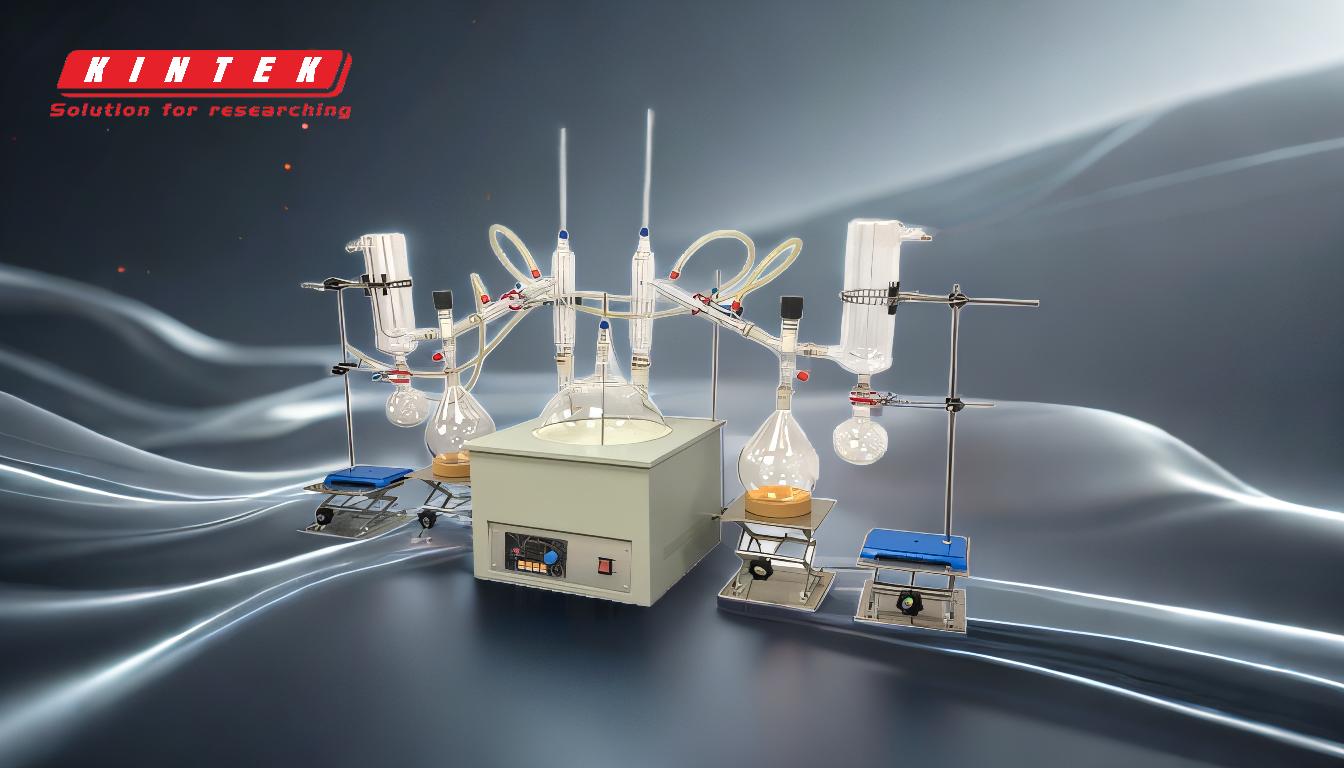Short path distillation is a specialized technique used primarily for the purification and separation of heat-sensitive compounds. It operates under high vacuum conditions, which significantly lowers the boiling points of the substances being distilled, thereby minimizing thermal degradation. This method is particularly advantageous for industries such as pharmaceuticals, food, and petroleum, where maintaining the integrity of delicate compounds is crucial. The process involves a short travel distance for vapor molecules from the evaporation surface to the condensation surface, which enhances efficiency and reduces the heat required. This makes short path distillation an ideal choice for both small-scale and budget-conscious operations.
Key Points Explained:

-
Purpose of Short Path Distillation:
- Purification and Separation: The primary purpose of short path distillation is to purify and separate components of a liquid mixture. This is particularly useful for obtaining specific compounds from complex mixtures.
- Heat-Sensitive Compounds: It is especially suitable for heat-sensitive products, as the process involves low evaporation temperatures and short residence times, reducing thermal stress on the distilled product.
-
High Vacuum Conditions:
- Reduced Pressure: Operating under high vacuum conditions lowers the boiling points of the substances, which is crucial for preventing the degradation of sensitive compounds.
- Efficiency: The reduced pressure also enhances the efficiency of the distillation process by allowing for quicker and more effective separation of components.
-
Short Travel Distance:
- Minimal Heat Requirement: The short distance that vapor molecules travel before condensation reduces the amount of heat required, making the process more energy-efficient.
- Minimized Degradation: The shorter path length helps in minimizing the degradation of compounds that are unstable at high temperatures.
-
Applications Across Industries:
- Pharmaceuticals: Used for purifying active pharmaceutical ingredients (APIs) and other sensitive compounds.
- Food and Beverage: Employed in the extraction and purification of essential oils, flavors, and other food-grade compounds.
- Petroleum: Utilized for refining and separating various petroleum products.
-
Advantages:
- Cost-Effective: Suitable for those on a tight budget or with limited space, as it does not require large distillation equipment.
- High Product Quality: Maintains high product quality due to the gentle nature of the process.
- Versatility: Can be used for a wide range of applications, from small-scale laboratory setups to industrial-scale operations.
-
Equipment and Techniques:
- Wiped Film Machines: Commonly used in short path distillation for their efficiency in handling heat-sensitive materials.
- Kugelrohr: A type of short path distillation apparatus used in laboratories for small-scale distillations.
- Standard Pot Stills: Adapted for short path distillation to achieve efficient separation with minimal thermal degradation.
In summary, short path distillation is a highly effective method for the purification and separation of heat-sensitive compounds, offering numerous advantages such as reduced thermal degradation, high efficiency, and versatility across various industries. Its ability to operate under high vacuum conditions and with minimal heat requirement makes it an indispensable technique in modern chemical processing.
Summary Table:
| Aspect | Description |
|---|---|
| Purpose | Purification and separation of heat-sensitive compounds. |
| Key Feature | High vacuum conditions reduce boiling points, minimizing thermal degradation. |
| Advantages | Cost-effective, high product quality, and versatile for various applications. |
| Applications | Pharmaceuticals, food and beverage, petroleum refining. |
| Equipment | Wiped film machines, Kugelrohr, and standard pot stills. |
Interested in learning more about short path distillation? Contact our experts today for tailored solutions!











